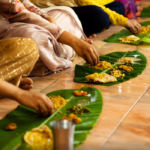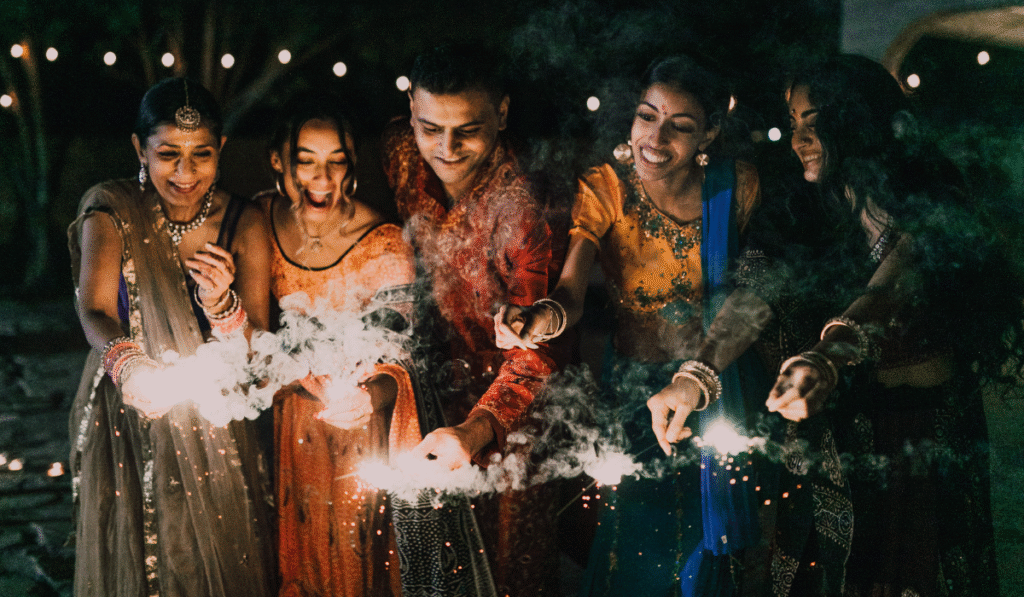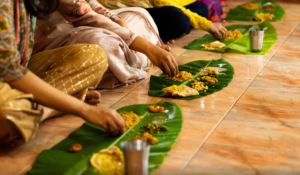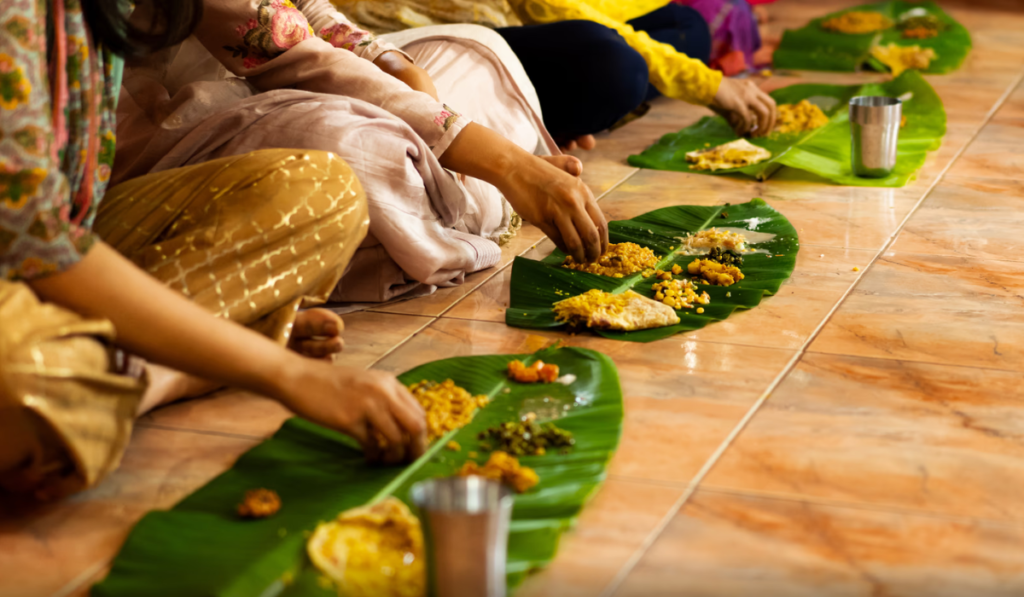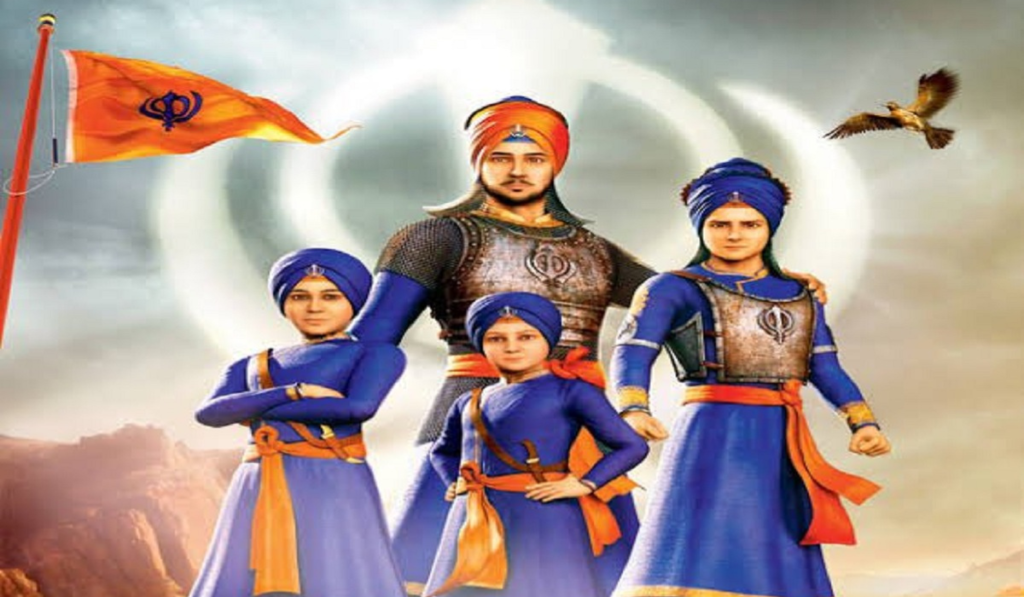There is something about Diwali that feels different because it’s not just a celebration. It’s a reminder that light will always find a way to shine through. Diwali 2025 brings another chance to pause, clean our surroundings and minds, and invite new beginnings with faith and warmth.
If you’ve ever wondered why we celebrate it the way we do or when is the best time to perform the Lakshmi Puja, this guide has everything you need to know about Diwali 2025. From the date and muhurat to the rituals, puja vidhi, and the deeper meaning behind the light that never fades.
Key Insights Before You Begin
- Diwali 2025 will be celebrated on Monday, October 20.
- Lakshmi Puja Muhurat: 7:08 PM – 8:18 PM (during Pradosh Kaal).
- The festival marks the return of Lord Rama to Ayodhya and the victory of light over darkness.
- It’s also a time to worship Goddess Lakshmi for prosperity, peace, and abundance.
- Cleaning homes and lighting diyas symbolizes mental and spiritual renewal.
- Performing the Lakshmi Puja during the muhurat invites the goddess’s blessings for the coming year.
- Across India, Diwali is celebrated as a reminder that goodness always finds its way back to light.
Diwali 2025, Date, Time, and Muhurat
So, when is the best time for Laxmi Puja? According to the Drik Panchang:
Amavasya Tithi Begins: October 20, 2025 – 03:44 PM
Amavasya Tithi Ends: October 21, 2025 – 05:54 PM
Lakshmi Puja Muhurat: October 20, 2025 – 07:08 PM to 08:18 PM
Pradosh Kaal: October 20, 2025 – 05:46 PM to 08:18 PM
Vrishabha Kaal: October 20, 2025 – 07:08 PM to 09:03 PM
Amavasya Tithi begins at 03:44 PM on October 20 and ends at 05:54 PM on October 21. As the Amavasya Tithi is active during the Pradosh Kaal of October 20, Diwali 2025 will be celebrated on Monday, October 20.
This period is believed to be when Goddess Lakshmi moves around the world, blessing homes that are clean, peaceful, and filled with positive energy. Lighting diyas during this time is symbolic of inviting her into your space with love and gratitude.
So, mark your calendar and plan your puja preparations around this sacred window of time.
The Story and Meaning of Diwali
Every family grows up with its own version of the Diwali story, and that’s the beauty of it. After celebrating the new beginning of prosperity with Dhanteras, Diwali marks something more prominent. In North India, Diwali celebrates Lord Rama’s return to Ayodhya after fourteen years of vanvas and his victory over Ravana.
Whereas, in Gujarat, it marks the worship of Goddess Lakshmi, the bringer of wealth and abundance. Meanwhile, in Bengal, people honor Goddess Kali, and in South India, it’s associated with Lord Krishna’s triumph over Narakasura.
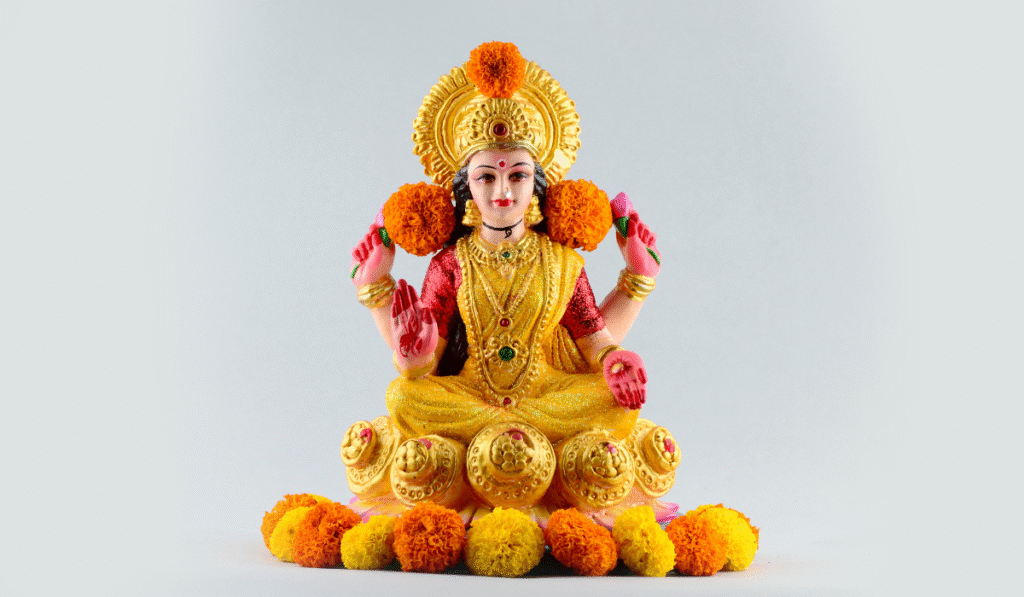
Different stories, one shared feeling, the victory of good over evil and darkness giving way to light.
But beyond mythology, Diwali’s meaning goes deeper. It is about renewal. It’s the universe’s way of nudging us to let go of what no longer serves us. The cleaning of homes reflects the cleansing of the mind. The lighting of diyas mirrors our inner desire to illuminate our hearts with understanding and kindness.
That’s why Diwali never feels repetitive. Each year, it meets us where we are in life, reminding us that even after our darkest nights, there is always a morning waiting to rise.
Rituals and Puja Vidhi for Diwali 2025
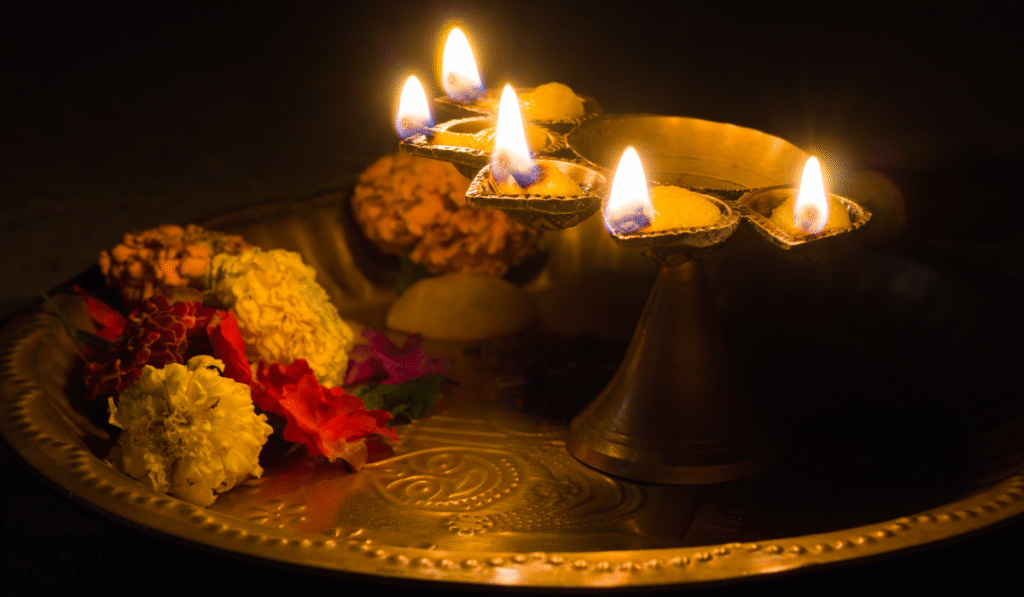
Performing the Diwali Puja is one of the most sacred traditions of this festival. As mentioned in the Drik Panchang, the puja should be done at the appropriate Diwali Puja Muhurat, considering fixed Lagna, Pradosh Kaal, and Amavasya Tithi.
A complete Diwali Puja is a beautiful sequence of rituals that invite peace, purity, and prosperity into one’s home.
Here’s how the traditional puja is performed:
- Atma-Shodhan: Begin with self-purification. Take a few moments to calm your mind, wash your hands, and focus your thoughts on devotion.
- Sankalp: Make a solemn vow to perform the Diwali Puja sincerely. Mentally express gratitude and seek blessings for your family’s well-being.
- Shanti Patha: Recite the Shanti Patha mantra to invoke peace, happiness, and prosperity for all.
- Mangal Patha: Chant mantras that bring auspiciousness and fulfil wishes in everyone’s life.
- Kalash Sthapana: Place a kalash filled with water, mango leaves, and a coconut near the altar as a symbol of purity and life.
- Bhagawan Ganapati Puja: Begin with a short Ganesha Puja to remove obstacles and invite wisdom. Offer flowers, sweets, and chant simple mantras like Om Gan Ganapataye Namah.
- Navagraha Puja: Offer prayers to the nine celestial planets for harmony and balance in life.
- Shodasha Matrika Puja: Offer respect to the sixteen mother goddesses who represent divine energies.
- New Ganesha Pratima Puja: If you’ve brought a new Ganesha idol, perform a short puja before placing it on your altar.
- New Shri Lakshmi Pratima Puja: Perform the Shodashopachara Puja of Goddess Lakshmi with flowers, sweets, rice, and coins. This is the most important part of Diwali night.
- Maha Kali Puja: Offer prayers to Goddess Maha Kali on the lekhani-dawat (pen and inkpot), symbolizing protection and courage.
- Saraswati Puja: Worship Goddess Saraswati on your bahi-khata (ledger or notebook) for wisdom and knowledge in your work.
- Kuber Puja: Offer prayers to Lord Kuber, the divine treasurer, usually performed near the tijori or locker.
- Deep-Malika Puja: Light rows of diyas across your home, symbolizing the removal of darkness and the arrival of divine blessings.
Next, conclude the puja with a heartfelt prayer, thanking all deities for their presence and blessings.
Puja Suggestion
A full Diwali Puja may take a few hours to complete. Since the Lakshmi Puja Muhurat is often short, it is advised to begin the initial rituals a little earlier so that the Lakshmi Puja coincides exactly with the muhurat time. The remaining steps can continue after the muhurat ends.
However, if you’re performing a simplified version at home, focus on the essentials. Self-purification, invoking Ganesha and Lakshmi, lighting diyas, offering sweets, and ending with a short aarti. The purity of heart always outweighs the length of rituals.
The Meaning Behind Lighting Diyas
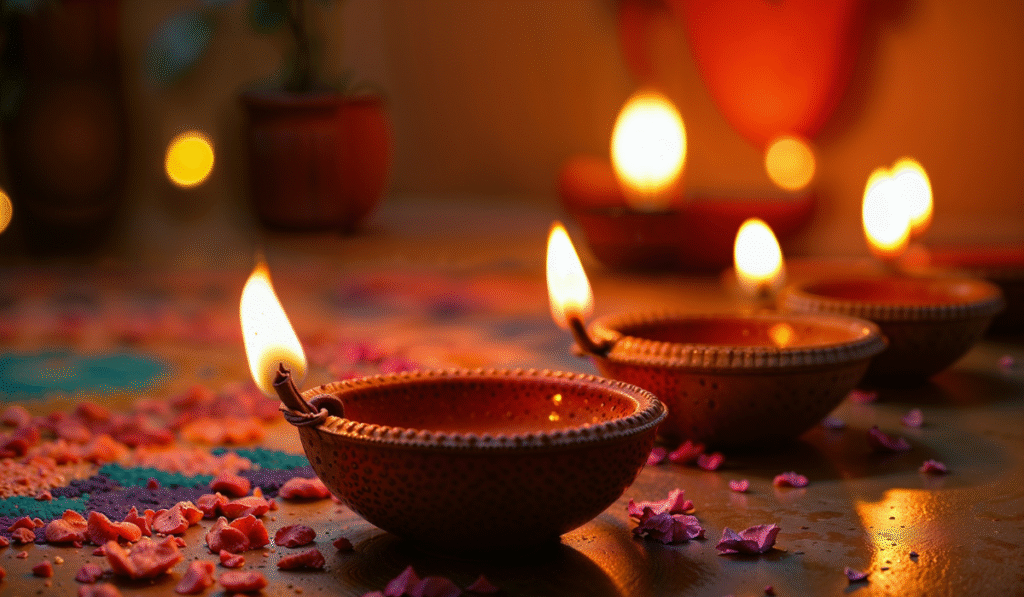
Every diya lit on Diwali carries a prayer. It represents knowledge over ignorance, hope over despair, and goodness over negativity.
When hundreds of diyas glow together, they remind us that even a single spark of light can brighten an entire path. That’s why people decorate their homes, verandas, and balconies with lamps and candles. It’s a way of saying, I choose light.
There’s also a spiritual belief that lighting diyas helps clear stagnant energy, attracting peace and prosperity. Some families use ghee diyas, while others light mustard oil lamps to honor their ancestors, sending them prayers through the flame.
So, when you light that first diya on Diwali 2025, do it with intention. Let it be your silent promise to stay kind, stay bright, and stay grounded.
Conclusion
Diwali 2025 brings another chance to step into the light, not just outside our homes but within. Prepare with care, celebrate with heart, and welcome Goddess Lakshmi with a mind full of gratitude and peace.
Let this Diwali be the one where your prayers are simple, your joy is sincere, and your heart feels a little lighter than before.
The beliefs and timings mentioned in this article are based on traditional references and the Hindu Panchang. Readers are encouraged to follow their family traditions and consult local sources for specific muhurat details.
Let’s stay connected! Come say hi on Instagram or follow us on Facebook for daily inspo.





